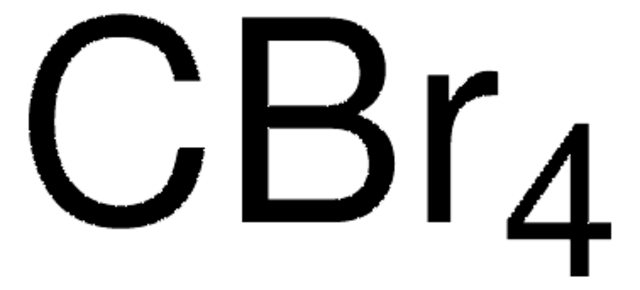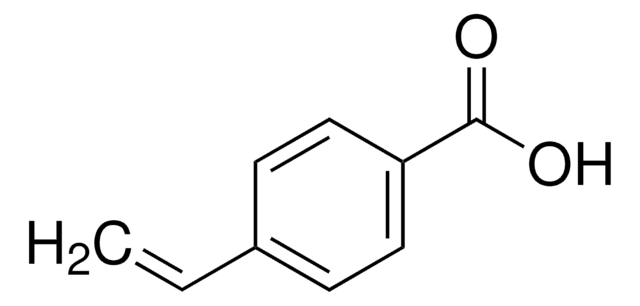Key Documents
289116
Carbon tetrachloride
anhydrous, ≥99.5%
Synonim(y):
Tetrachloromethane
About This Item
Polecane produkty
klasa czystości
anhydrous
Poziom jakości
gęstość pary
5.32 (vs air)
ciśnienie pary
143 mmHg ( 30 °C)
91 mmHg ( 20 °C)
Próba
≥99.5%
Postać
liquid
zanieczyszczenia
<0.002% water
<0.005% water (100 mL)
współczynnik refrakcji
n20/D 1.460 (lit.)
tw
76-77 °C (lit.)
mp
−23 °C (lit.)
gęstość
1.594 g/mL at 25 °C (lit.)
ciąg SMILES
ClC(Cl)(Cl)Cl
InChI
1S/CCl4/c2-1(3,4)5
Klucz InChI
VZGDMQKNWNREIO-UHFFFAOYSA-N
Szukasz podobnych produktów? Odwiedź Przewodnik dotyczący porównywania produktów
Zastosowanie
Hasło ostrzegawcze
Danger
Zwroty wskazujące rodzaj zagrożenia
Zwroty wskazujące środki ostrożności
Klasyfikacja zagrożeń
Acute Tox. 3 Dermal - Acute Tox. 3 Inhalation - Acute Tox. 3 Oral - Aquatic Chronic 3 - Carc. 2 - Ozone 1 - Skin Sens. 1B - STOT RE 1 Inhalation
Organy docelowe
Liver,Kidney
Kod klasy składowania
6.1B - Non-combustible acute toxic Cat. 1 and 2 / very toxic hazardous materials
Klasa zagrożenia wodnego (WGK)
WGK 3
Temperatura zapłonu (°F)
Not applicable
Temperatura zapłonu (°C)
Not applicable
Środki ochrony indywidualnej
Eyeshields, Faceshields, Gloves, type ABEK (EN14387) respirator filter
Wybierz jedną z najnowszych wersji:
Masz już ten produkt?
Dokumenty związane z niedawno zakupionymi produktami zostały zamieszczone w Bibliotece dokumentów.
Nasz zespół naukowców ma doświadczenie we wszystkich obszarach badań, w tym w naukach przyrodniczych, materiałoznawstwie, syntezie chemicznej, chromatografii, analityce i wielu innych dziedzinach.
Skontaktuj się z zespołem ds. pomocy technicznej









